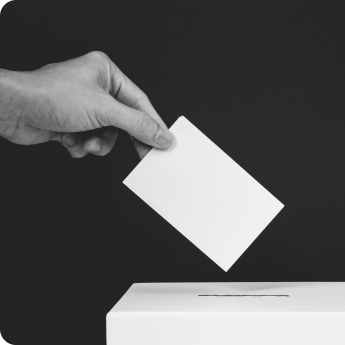Press Releases, Report
Mega Banks Testifying Today Reaped $1.6B From Abusive Overdraft Fees in 2022 Alone
At Hearings, Watch Out For This Deceptive Rhetoric Defending The Predatory Practice
This week, CEOs from the nation’s largest banks are slated to testify before both the House Financial Services Committee and the Senate Banking Committee. The issue of abusive overdraft fees imposed by some of nation’s biggest banks – including Wells Fargo, JPMorgan Chase, and Bank of America – is more than likely to come up after the Consumer Financial Protection Bureau (CFPB) launched an initiative earlier this year to save consumers billions of dollars in exploitative “junk fees,” including overdraft fees.
Ahead of the testimony, a new analysis from Accountable.US has found that in the first half of 2022, just three of these “megabanks”—Bank of America, Wells Fargo, and JPMorgan Chase—have together reported over $37 billion in net income while reaping $7.8 billion in revenue from service charges on consumers’ deposit accounts, including over $1.6 billion from overdraft fees. Meanwhile, these three banks have spent $25.7 billion on stock buybacks and shareholder dividends, representing 69.4% of their net income over this same period.
Making matters worse, these three banks have faced at least $5.3 billion in fines and settlements since 2020, including $460.7 million in 2022 so far.
This practice continues to especially harm low-income consumers, who are often living paycheck-to-paycheck, or those relying on the timely receipt of benefit payments. These penalties are a persistent obstacle for many to achieve economic stability in their own lives or businesses. When so many families struggle to get ahead while dealing with this needless extra financial burden, it holds back the economy for everyone.
The hearings come amid reports that federal regulators are preparing to fine Bank of America for “charg[ing] struggling customers multiple overdraft fees when they were out of money” among other violations.
While the practice is indefensible, it has not stopped the financial industry from trying.
In recent years, the industry’s rhetoric has lauded overdraft as a service that “saves customers money” and incentivizes consumers to “monitor and manage” their finances. The reality is that overdraft programs cost consumers billions each year, heavily benefit banks and their shareholders, and cause confusion and embarrassment for consumers.
Corporate greed that has fueled inflation has already left consumers paying a high price, and big banks like Bank of America, Wells Fargo, and JPMorgan Chase are making matters even worse for low-income families by charging abusive overdraft fees on top of it all. These billions of dollars in abusive fees are being siphoned from the economy, money that could be otherwise spent on goods and services that create jobs rather than pad big banks’ bottom line. Cracking down on this unnecessary practice will only help boost the economy.
Billion-dollar banks would still be extremely profitable without nickel and diming low-income families under this exploitative practice. There’s simply no good reason for policymakers to protect it.
Here are some of the excuses you may hear from the mega bank CEOs this week in defense of overdraft products – along with the reality [CLICK HERE for more information]:
- RHETORIC: The finance industry and its consultants claimed overdraft products would treat customers fairly.
- REALITY: Overdraft fees disproportionately harm low-income and Black and Latino Americans.
- RHETORIC: Banks and consultants promoted overdraft as a product that would save consumers from the “embarrassment” of bouncing bad checks.
- REALITY: Consumers have admitted overdraft has been “a source of stress and embarrassment” and were so harmful some had to rely on friends to “scramble $10” to try and help.
- RHETORIC: Consultants and financial institutions have often claimed overdraft protection would save consumers money.
- REALITY: Overdraft programs have continually cost consumers billions, with consumers paying over $11 billion in overdraft fees in 2021 alone.
- RHETORIC: Industry groups have argued that overdraft programs served as a form of “short-term liquidity.”
- REALITY: As early as 2010, regulators clarified that overdraft programs were never supposed to be “a regular source of credit” and can cause “‘substantial and unnecessary costs’” for consumers.
- RHETORIC: Industry groups have claimed that restricting or eliminating overdraft would drive consumers to “predatory payday lenders.”
- REALITY: Banks do not communicate to consumers about their right to opt-out of a transaction and do not need to incur a fee in the first place.
- RHETORIC: Bank trade groups have claimed the vast majority of consumers find overdraft protection “valuable.”
- RHETORIC: Industry groups have claimed ending overdraft fees “could harm the safety and soundness of the institution, put[ting] consumers at risk.”
- REALITY: Some banks, such as Ally Bank, that have eliminated overdraft fees have seen increases in consumer banking revenue, total retail deposits, and customer numbers.
- RHETORIC: Industry groups have argued that overdraft fees are avoidable with changes to consumer behavior and can serve as “an incentive for consumers to monitor and manage” their finances.
- REALITY: Regulators say that overdrafts are “easy revenue” for shareholders.
- RHETORIC: The U.S. Chamber of Commerce has argued that eliminating overdraft would “make it more difficult for consumers to manage their finances.”
- REALITY: Banks do not effectively communicate options with consumers and even “rearrange” consumer purchases to increase the amount of overdraft revenue it can collect from consumers.
- RHETORIC: The financial industry has warned that removing overdraft fees would result in “significantly more bounced checks and declined debit card transactions,” when in
- REALITY: Consumers already prefer when banks make the decision to decline a transaction instead of imposing a fee.
